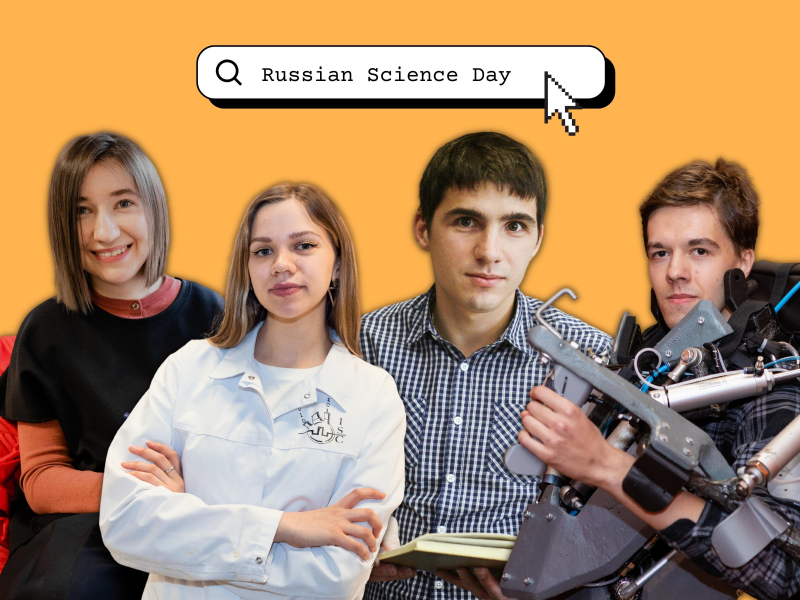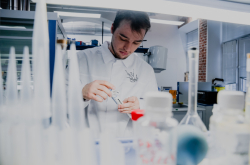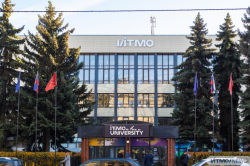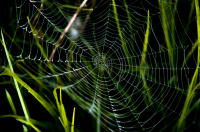Science as a competition
Anna Nikitina, a third-year PhD student at SCAMT, researcher at the Infochemistry Scientific Center:
I got into chemistry as a school student. I had a very inspiring teacher, Tatyana Proshchenkova, who instilled in me a love for this science. So, I took the exam in chemistry and applied to the St. Petersburg State Institute of Technology, where I started doing research from the first year of studies.
Alexey Eremin was my lecturer in inorganic chemistry during my Bachelor’s studies. After my first year, I asked him to let me join his lab, but instead he suggested another research team for me. They were involved in the development of polymers for biological applications and I thought this to be a very promising research field, as polymers are all around us, plus it’s a biomedical specialization. That’s how I started to do research at the Russian Academy of Sciences’ Institute of Macromolecular Compounds under the leadership of Maria Stepanova. For three years, we’d studied macroporous sorbents for the detection of cholesterol in biological fluids.
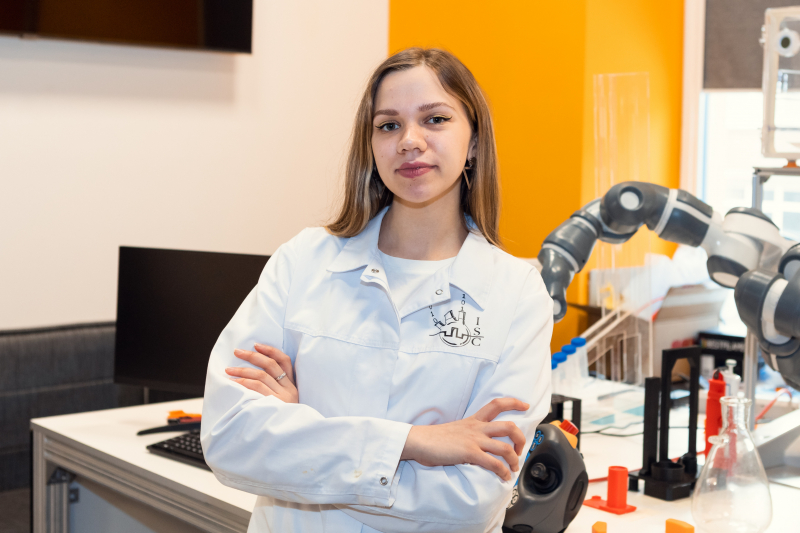
Anna Nikitina. Credit: Dmitry Griogyev, ITMO.NEWS
After my Bachelor's studies, I knew I wanted to continue doing science and grow as a scientist, but also to slightly change my research field. I wanted to explore a chemical field besides macromolecular compounds. Unfortunately, RAS institutes aren’t always interested in new trends, whereas ITMO welcomes young and motivated researchers. That’s what attracted me when I came to SCAMT for an interview to apply for Master’s studies. As a result, I joined Ekaterina Skorb’s research team, defended a thesis with her as my supervisor, and joined the Infochemistry Scientific Center as a researcher. During my Master’s studies, I started working on hybrid functional systems based on semiconductors and polyelectrolytes. We worked on dynamic materials with a controlled response and learned how to manage them using light and changes in pH.
In the summer of 2018, I went on an internship at the Max Planck Institute for Colloids and Interfacial Surfaces (Germany). There, I had to change my research field and take up microbiology: I worked with bacterial films that we programmed using polyelectrolytes. We were able to prove the possibility of controlling the growth of biofilms by modifying the surface of a solid substrate. Three years later, we published a paper on this research.
In 2019, I was offered an internship at the National University of Singapore with a team headed by Prof. Daria Andreeva and Nobel Prize laureate Konstantin Novoselov. As a result, we created an artificial biomimetic membrane based on graphene oxide and polyelectrolytes.
We can’t stop the process of aging. Researchers are trying to reproduce biological cells so that it would be possible to replace natural organs with synthetic ones. The cell is a small but integral mechanism with hundreds of reactions happening inside it every second. Not all of them have been studied yet, so there’s a promising proposal to create an artificial analog to the cell. It would help us realize how natural cells work.
Now I’m a PhD student, and research on controlling the properties of this membrane will be a part of my thesis. I still haven’t decided what I’m going to do after getting a degree. It would be great to continue my fundamental studies but to also try my hand at applied tasks.
Last year, I won a presidential scholarship to study abroad and in September I was supposed to fly to Singapore to work with Daria Andreeva until the end of the year. However, the trip was postponed due to the pandemic. In the past, it took us from one to three months to do all the paperwork, so it was easier to receive an invitation and go abroad. In the scientific world, taking a pause means that someone else can implement your ideas before you. It’s both motivational and discouraging at the same time, although competitiveness can also be a source of inspiration. It’s important to know what other researchers are doing. There are several teams around the world that try to solve tasks similar to mine and I always follow their publications. Naturally, I’m inspired by other people's ideas, but at the same time, thoughts like “Why didn’t I think of this before?” tend to come to mind.
Science as entrepreneurship
Alexey Slobozhanyuk, dean of the Faculty of Engineering Research, senior researcher at ITMO’s Faculty of Physics:
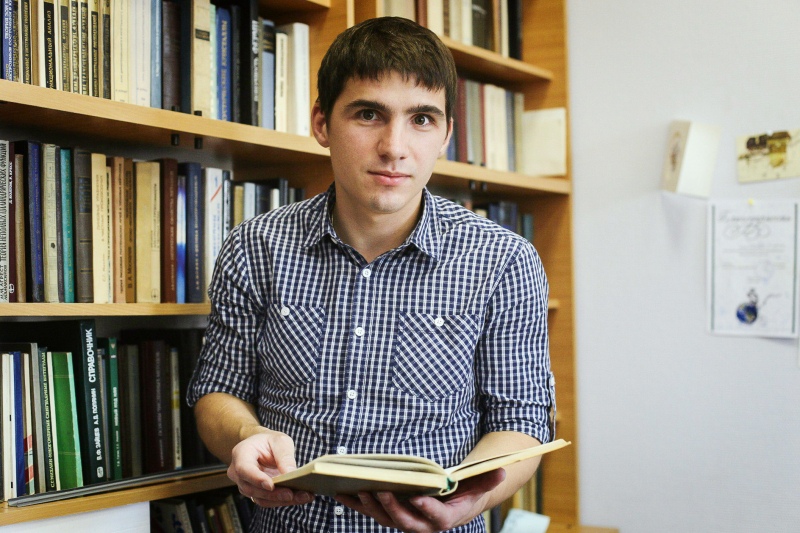
Alexey Slobozhanyuk. Credit: ITMO.NEWS
When I was in the second year of studies, my former lecturer and now a colleague Irina Melchakova asked my class if anyone would like to join a brand-new lab and do research. I thought that all 25 students would say yes, but actually, only my friend and I came in for an interview.
Our first task was to compile a list of sources on nanoantennas. There wasn’t anything about them in Russian journals and I, a student, didn’t know much about them altogether. However, we successfully completed the task and started our research in January 2011.
I never thought science would be my calling, but I guess I was at the right place at the right time. I was lucky enough to meet Pavel Belov, who was my scientific advisor. He showed me that it’s cool to do science and that there are interesting tasks. That’s how I got in and started to work 24/7 right from the start. I even missed my classes because of it, as I worked and studied in the same department.
Why did I raise my hand? Firstly, I was really interested in the lives of scientists and wanted to learn how they work. Secondly, my position at the lab was paid-for and I wanted to become independent from my parents. If I had come to the lab and seen a stereotypical scientist – someone older, highly talented, but without a spark in their eyes – I probably wouldn’t want to join. But instead, I was greeted by a young, promising, active, and successful person.
Straight from the start, I realized that in science, you need to pick up several projects at once because you never know which one is going to work. And when you’re a student, you should aim to achieve some sort of result as soon as possible. I always advise my students to join at least two projects at once. At first, these are pilot projects with a minimal impact from the student. But then the responsibility, scale, and engagement increase.
As a scientist, you’re always working. You can’t come to the lab at 10 am, leave at 5 pm, and forget all about your work. You keep thinking about research on the commute, at dinner, in the shower… And the solution might come to you at any moment. Many successful scientists I’ve met said that they’re not that talented, they just work really hard. So in science, like in any other field, you need to make lots of efforts in order to achieve something.
Opportunities offered by science motivate me. Say, you’ve done research, applied for an international conference, got accepted, and went there. This allows you to visit a new place and meet people you wouldn’t otherwise meet. I went abroad for the first time in 2011 – before that, I didn’t even have a travel passport. And the first place I visited was San Diego, California!
Another thing that inspires me is how the results you achieve tend to follow each other: first, it’s a presentation at a conference, then your first published academic paper, which allows you to upgrade your CV and receive a scholarship. At first, this is a bit of a shock, but then you grow more confident. So you start to work on a grant application for your own project, and then look for a collaboration with international colleagues. It’s a constant challenge and development.
Plus, science provides you with academic freedom: you can choose what to study and work for your own benefit.
Science as art
Arina Buzdalova, senior researcher at the Research Center “Strong AI in Industry,” staff member of the International Laboratory "Computer Technologies":
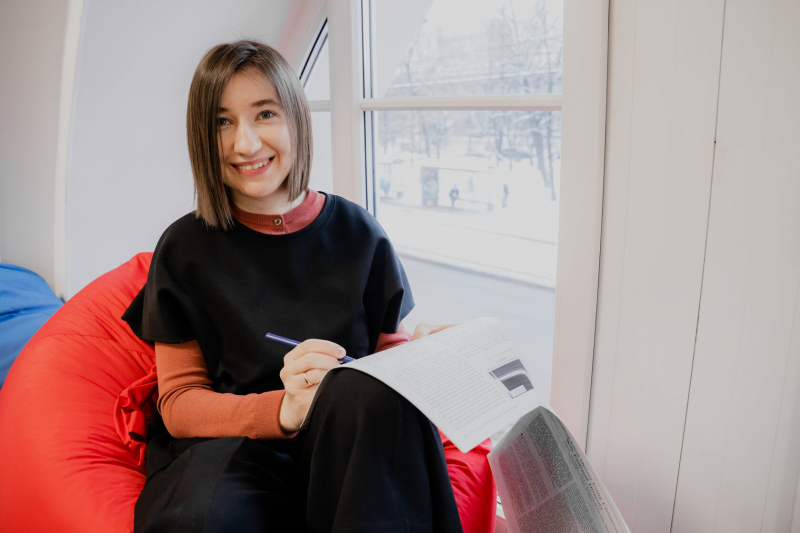
Arina Buzdalova. Credit: ITMO.NEWS
Since early childhood, I’ve been into creative activities. I was riding a wave of ideas and enjoyed coming up with new things. But I didn’t know how to apply this energy. At school, I was a bit afraid of going into science: it seemed to me that “scientist” was a synonym for “genius.” Of course, back then I didn’t realize there is a routine side to it that is also very important, and you can start with small tasks.
At university, I became part of a scientific environment. In my third year, a team of young scientists started forming in our department, many of us students. And what was important, our mentor – Anatoly Shalyto – gave us a lot of freedom. We looked into the different subfields of computer science, read conference articles, and searched for things we were personally interested in. That’s when I understood that science isn’t a terrifying beast; there’s a lot of creative freedom in it and an opportunity to create radically new things. And that’s what I like about science.
I work with evolutionary algorithms and I wouldn’t want to go into a drastically different field. There’s still a lot of potential here that is yet to be unlocked. Besides, it’s a very flexible science. Evolutionary algorithms can be used in deep learning to generate frameworks for neutral networks, or in biology – for example, to analyze biological processes. Finally, evolutionary algorithms can even be used in art. Last year, me and my colleagues, particularly Maxim Buzdalov, started collaborating with the university’s Art & Science Center and developed the project Hubris. It’s an interactive object that shows you how evolutionary algorithms work and popularizes them among a wider audience.
One of the key projects I’m working on at the moment is about the fundamental basics of dynamic tuning of evolutionary algorithms. Its main idea is that we’re studying the ability of an evolutionary algorithm to adjust to conditions in which it finds itself during optimization. In other words, we don’t set its parameters in stone; instead, we make it so the algorithm could adapt to the circumstances and self-adjust. It’s a joint project with Sorbonne University. It’s expected to last three years and we’re currently in the second. The project covers several scientific disciplines and I’m its head from ITMO’s side. This is my first experience leading such a major project. Naturally, as its head, I'm responsible for general affairs and coordinating tasks, but I also take direct part in the research.
In science, everyone has their own challenges. For example, at the start of my career I was deeply invested in my research. I barely paid attention to myself: I’d be up all night to finish an article by deadline. Back then, in my third year as a student, it was justified and helped me grow quickly. But over time, I grew tired of this lifestyle. And when you’re exhausted, you lose motivation and with it come more challenges. But I learned to handle this – first and foremost by taking care of myself, paying more attention to my own needs, and spending time on hobbies. In other words, I found my work-life balance. Hobbies in general are really good at maintaining your motivation: when you have other interests, you gain new perspectives on your research field and discover new things about it. That’s why I like science art so much.
Science as a childhood dream
Alexey Ledyukov, a third-year student at the Faculty of Control Systems and Robotics, staff member of the International Laboratory of Biomechatronics and Energy-Efficient Robotics:
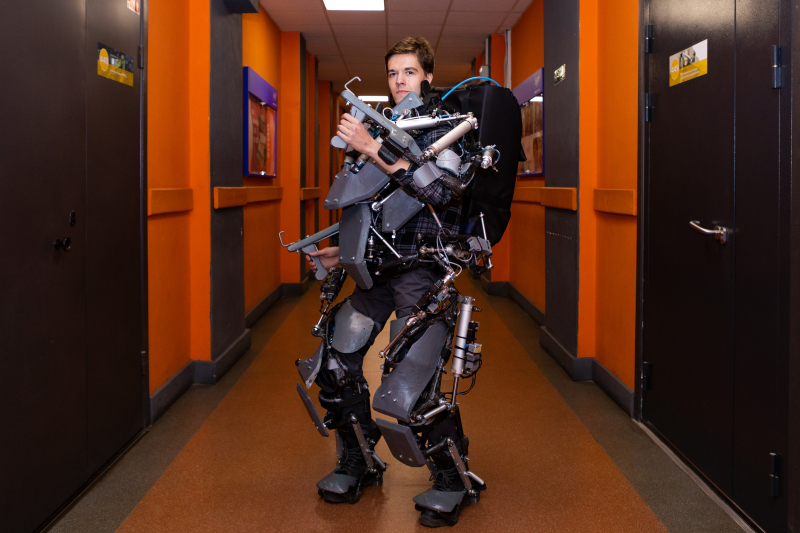
Alexey Ledyukov. Credit: Dmitry Griogyev, ITMO.NEWS
As a kid, I dreamed about becoming a paleontologist or an architect. But I really got into science only in eighth grade. I started going to conferences and all kinds of events and met my first scientific advisors. That’s when I found an interest in exoskeletal mechanisms.
I’ve always been interested in the interaction between robotic systems and humans. At first, I was into robotics, and exoskeletons were a logical continuation. My family, including my parents, were in IT or worked on designing various devices and mechanisms. That must be why I was drawn to this subject.
In my research field, there are several trends: increasing the exoskeletons’ autonomy, operating load, and agility, reducing their mass and profile, and boosting the accuracy with which it detects and predicts human movement. These goals are born from the tasks supposed to be carried out by exoskeletons: they are designed to be the halfway solution between heavy machinery and a regular person in order to transport cargo over difficult terrain that is inaccessible to large vehicles. These are the conditions around which we base the key parameters of exoskeletal mechanisms.
Our team works on active, semi-active, and passive exosuits. Two years ago, I worked in the capacity of a design engineer and 3D modeler on the development of a military passive exoskeleton for Armocom. Right now, I’m designing and modeling a semi-passive industrial exoskeleton and a fully active (hands, legs, spine) pneumatic exoskeleton – both as part of grants from the Russian Science Foundation.
In my work, I frequently deal with time constraints, supply delays, and difficulties in securing funding and finding suppliers or facilities capable of producing the right parts. There are also challenges when it comes to designing and fine-tuning certain nodes or systems. But I love doing this and I want to get better at it, so these difficulties don’t stop me.
